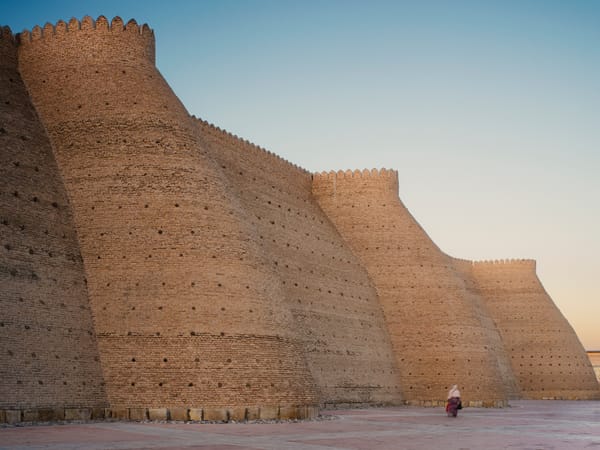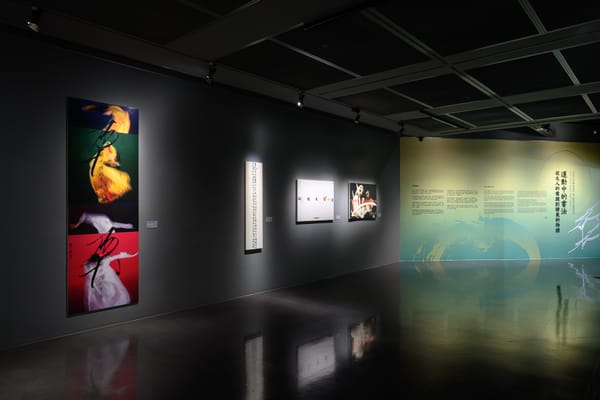Shows
Haegue Yang’s “Family of Equivocations”


Between the modern art capitals of Paris and Berlin, the modest city of Strasbourg made a just brief cameo in the interwar chapter of European Modernism. This oft-forgotten moment is central to the plot of Haegue Yang’s first large-scale solo show at a French institution, “Family of Equivocations,” a project two years in the making with Strasbourg Museum’s curator Camille Giertler.
Historical personages—often intrepid, and sometimes tragic, women—are central figures in Yang’s practice, their lives and works serving as inspiration for the artist’s diverse sculptures, installations and conceptual projects. In Strasbourg, the central protagonist was Sophie Taeuber-Arp, the Swiss-born artist, textile maker and dancer, who, until her death in 1944 of carbon monoxide poisoning, was a major figure in Zürich’s Dada movement and an early Constructivist. Her work, however, was often overshadowed by that of her husband, fellow Dada-ist Jean Arp. In 1926, the couple had relocated to Strasbourg from Switzerland and there were commissioned to design a new social space at the heart of the city, the Café de l’Aubette. They invited Theo van Doesburg, founder of the De Stijl movement, to join them in what was intended to be the “Sistine Chapel of Abstract Art.” Together they produced a jubilant and elegant modern banquet hall, foyer-bar area and Ciné-Dancing hall, including a film screen, with large, colored square panels on the walls and ceiling. Before World War II, L’Aubette was a temple to both abstraction and the popular arts of film and dancing, where locals spent the evenings in the company of friends.

The commingling of the modern and popular arts—including painting, sculpture, architecture, design, film, dance, music and theater—is perhaps lost from the vantage point of today, when the exhausted 20th-century avant-garde disciplines look codified and discrete. Yet Yang’s recent sculptures, as hybrid objects, return to the early 20th-century when artworks were much more free to be their own curious things. In Yang’s case, her Dress Vehicle – Zig Zag and Dress Vehicle – Yin Yang (2012), located in the Salle des Fêtes, in the Aubette 1928, which served as the first exhibition venue for Yang's solo show, are three-meter-tall sculptures on wheels. The panels of colorful macramé, yarn and bells and Venetian blinds can be wheeled (and danced) around the space, and have bells and blinds that make noise and rattle. From the inside, a walker drives the sculptures, while from the outside, their many pointed sides can be swung open or closed and the blinds lifted and lowered. Wonderfully awkward to steer, they are at once machines, structures, costumes, prototypes and models.
Making noise and dancing about was further encouraged in the Ciné-Dancing hall, where Yang’s new series of garments made from miniature bells, "Sonicwears" (2013), were placed on tables in the middle of this film-viewing and dance salon. Made of nickel-plated bells, some of the "Sonicwears" are like ponchos or vests, others like shawls, bracelets, ankle socks, or elaborate (and vaguely kinky) handcuffs. All are terrifically heavy to wear, like chain-mail armor, and offer a wide percussive range of sounds—depending on the wearer’s motion while strolling, skipping or twirling around the space. They are homages to Taueber-Arp’s Dada costumes and an invitation to the audience to make something like a performance.

Between these two festive spaces is the Foyer-bar, where dancers and revelers could cool off and quiet down with the introspective sculpture Incarnation of Wind and Condensation (2013), which features a black metal fan atop a custom-designed bar where two bottles of frozen water taken from a small freezer underneath are placed at regular intervals throughout the day. Situated between the two grand rooms of L’Aubette, the two perspiring bottles perhaps represent the chance meeting of two revelers, or for the meeting of past and present. The new work harks back to Yang’s sculptures from the 2009 Korea Pavilion at the Venice Biennale, “Condensation,” and an earlier cycle of her works that featured fans and heat-lamps. In these works, the motif of “condensation” (the transformation of vapor into liquid) was an analogy for how intellectual ideas become tangible realities, or for the survival of progressive ideals long after their originators had physically departed from the world.
The exhibition’s second venue, Strasbourg’s Museum of Modern and Contemporary Art, houses a model of L’Aubette 1928 and many artworks by both Arp and Taeuber-Arp, including her Coupe Dada (1916), a rounded painted-wood object resembling a hat stand and assuming a kind of anthropomorphic presence. Yang’s “Family of Equivocations,” located in a two-storey gallery nearby, is demarcated by a hanging installation of colored Venetian blinds, Blind Curtain — Flesh Behind Tricolore (2013), comprised of seven vertically suspended rows of 60-centimeter-square shades. The semi-transparent forms allow the colors—ranging from white, gray and “flesh-tone” to solid reds and forest green—to mingle and vary depending on the vantage point. This work, like their siblings that Yang has created in recent years, may be a “domesticated” object—being made of this simple household material—yet, as an abstraction, it is a sharp rebuke to the principles of High Modernism that command a single, frontal vantage point, a flat surface and solidity of form. In other words, the blind series are made of a material that light passes through, rather than a flat structure that dominates a space or reflects the light off its surface. These hanging structures—in their colors, variations and lightness—are everything that a minimalist steel sculpture or Barnett Newman canvas is not. This is abstraction as we have not known it before.

Inside the galleries were many new works by Yang, several ongoing series shown in a new, fuller form, and several works that had never or rarely been shown before. Greeting one in the middle of the gallery, like a familiar, old friend, is Non-Indépliable, Azuré (2010), a drying rack covered in a blue fabric with its “arms” outstretched—an inadvertent figure. On the walls is Eclectic Totemic (2013), a wallpaper created in collaboration with London graphic designers OK-RM (Oliver Knight and Rory McGrath), that, in the manner of the Surrealist game “cadavre exquis,” combines figures taken from 1920s literature and dance. On top of this, on the wall in frames are “Non-Foldings – Scenarios of Non-Geometric Folding” (2013), which are flattened origami objects used for the “Non-Folding — Geometric Tipping” series (works made by placing origami objects on paper and spray-painting the paper in black, leaving behind only their outline forms). The “Non-Folding — Geometric Tipping” works, themselves austere black-on-white constellations of forms from the origami figures, return to the idea of a single geometric form (the origami object) dancing across the page to produce these improvised images. Hardware Store Collages (2012–13) translates animatronic-motion across a flat surface with its catalog clippings of light bulbs, door handles and other fixtures pasted across a black surface. Motion and abstraction arises again in the never-before-seen Carsick Drawings (2006). Yang made the jagged tracings around the perimeter of articles in Japanese newspapers while riding the bus in the rural Akiyoshidai region in Japan. A whole room upstairs is devoted to the Trustworthies, which are Yang’s collages made from the security linings of envelopes and graph paper. Diagonal Composition in Flow — Trusthworthy #183 (2013) takes up three walls of the gallery, the colorful forms spanning multiple framed panels, and on the fourth wall Central Composition in Explosion — Trusthworthy #184 (2013) uses more complicated, octagonal forms.

While the “dancing object” and “abstraction in motion” are key motifs in Yang’s oeuvre, these are abstractions that do not privilege one vantage point or one material—they are aspects of a larger conception of the “minority” that runs throughout Yang’s works in Strasbourg. For one thing, Taeuberg-Arp herself had long been the neglected partner in her marriage with Jean Arp, and thus within the Dada movement at large. Textiles feature less prominently in the history of abstraction than paintings. Materials such as the macramé, Venetian blinds, origami, the inside linings of envelopes, hardware-store catalogs, the reverse side of a mirror (a piece called Back, 2006), the slightly malformed or “defective” origami objects in the photograph series “Imperfections” (2010) and the hand-knitted sleeves of Roll Cosies – Cash Register Rolls, 50 Meter (2012) are Yang’s veneration of the humble, marginalized and overlooked. You don’t have to name the structures and ideologies that she is pushing back against—or even know that there are any—to appreciate the ways in which Yang is proposing a revised understanding of abstraction, modernism and 20th-century history.
HG Masters is editor-at-large of ArtAsiaPacific and is based in Istanbul.







